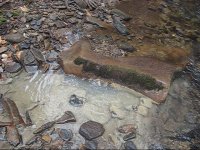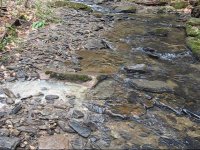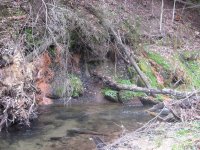pcray1231 wrote:
I use the indicator strips for pH.
http://www.indigo.com/Test-Strips/gph-test-strips/ph-paper-1-14.html
However, I'll warn that on a lot of freestoners, pH fluctuates a lot. My theory is that a stream is mostly governed by the worst of times. So a really bad reading may be telling, but a relatively good reading may mean nothing. FWIW, the worst times are generally, but not always, during peak flow in the early spring. Frozen ground limits the effect of springs, and a snow melt mixed with fresh rain maximizes the direct acid precip runoff.
Alkalinity is more steady (but still not totally steady), and a better indicator than pH. It's a measure of the buffering capability, or how much acid must be added to lower the pH a certain amount. The quick test kits mostly suck, the minimum interval is like 40. When you're looking for the difference between 2 and 11, that doesn't help much. They will tell you limestoner vs. freestoner, but thats about it, and you can usually tell that without a fancy test anyway. I have used titration for a more accurate measurement, but its a hassle, and I only have the equipment because my wife is a chemist. It's been a while since I've done that. I[color=FF0000]f anyone knows of a good, accurate kit to test alkalinity at freestoner levels, I'm all ears. [/color] You'd want to test this at low flows, when the springwater influence is maximized, to get an idea of how much minerals those springs add.
How do you know it was methane bubbling up? Just wondering? Air bubbles are common, especially around springs. In swamps too, that can actually be shallow methane from decaying plant matter, usually with a bunch of other stuff. But if its a true, deep earth methane leak, that could be real bad, and you should report it. Methane itself is odorless, so you wouldn't be able to tell by smell (unless it was a gas-line leak, they add stuff to make it smell). You could light a match, but that might not be such a good idea...







